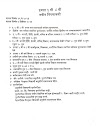Welcome to our blog on percentages! Here, we'll cover the basics and beyond, exploring topics such as percentage calculations, increases and decreases, and real-world applications.
What are Percentages?
Percentages are a way to express a value as a fraction of 100. They are often used to represent proportions, rates, and ratios in a clear and concise manner.
Key Concepts
1. Percentage: A percentage is a number or ratio expressed as a fraction of 100.
2. Percent: The symbol "%" is used to represent percent.
3. Percentage Increase: A percentage increase is a rise in value or quantity, expressed as a percentage of the original value.
4. Percentage Decrease: A percentage decrease is a drop in value or quantity, expressed as a percentage of the original value.
Calculating Percentages
1. Finding a Percentage: To find a percentage, divide the part by the whole and multiply by 100.
2. Percentage Increase: To calculate a percentage increase, subtract the original value from the new value, divide by the original value, and multiply by 100.
3. Percentage Decrease: To calculate a percentage decrease, subtract the new value from the original value, divide by the original value, and multiply by 100.
Real-World Applications
1. Finance: Percentages are used to calculate interest rates, investment returns, and discounts.
2. Statistics: Percentages are used to represent data and trends in statistics.
3. Science: Percentages are used to express proportions and rates in scientific research.
4. Everyday Life: Percentages are used in everyday life to calculate tips, discounts, and sales tax.
Common Percentage Calculations
1. 10% of a Number: To find 10% of a number, multiply the number by 0.1.
2. 20% of a Number: To find 20% of a number, multiply the number by 0.2.
3. 50% of a Number: To find 50% of a number, multiply the number by 0.5.
Tips and Tricks
1. Use a Calculator: Use a calculator to check your calculations and ensure accuracy.
2. Double-Check Your Work: Double-check your work to ensure that your calculations are correct.
3. Use Mental Math: Use mental math to estimate percentages and make quick calculations.
Percentages are an essential concept in mathematics and are used in a wide range of applications. By understanding how to calculate and work with percentages, you can make informed decisions and solve problems with confidence.
To extract percentages from a graph, follow these steps:
Identify the Graph Type
1. Bar Graph: Look for bars that represent different categories, with the height or length corresponding to the percentage value.
2. Pie Chart: Identify the slices of the pie, each representing a percentage of the whole.
3. Line Graph: Check for data points on the line, with percentages marked at each point.
Check the Axis Labels
1. X-Axis (Horizontal): Identify the categories or data points represented on the x-axis.
2. Y-Axis (Vertical): Check the scale and labels on the y-axis to determine the percentage values.
Read the Graph
1. Bar Graph: Read the height or length of each bar to determine the percentage value.
2. Pie Chart: Identify the percentage value of each slice.
3. Line Graph: Read the percentage values marked at each data point.
In conclusion, percentages are a fundamental concept in mathematics that represent a proportion or rate per 100. Understanding percentages is crucial for various real-world applications, including finance, statistics, and science. By mastering the concept of percentage, you'll be able to calculate and interpret data, make informed decisions, and solve problems with confidence. we hope this blog has provided you with a solid foundation in percentages. Stay Tuned for More
In our next blog, we'll delve deeper into the world of geometry, exploring more advanced concepts.
And also stay tuned for more exciting adventures in the world of mathematics!
By
Prof. Swati Pradip Jadhao
WhatsApp Group 👇
https://chat.whatsapp.com/GDjvYdmxJLWFBiOvQajm4Y
Search pradipjadhao on Google for more detail Information..
Thank you🙏



















0 Comments